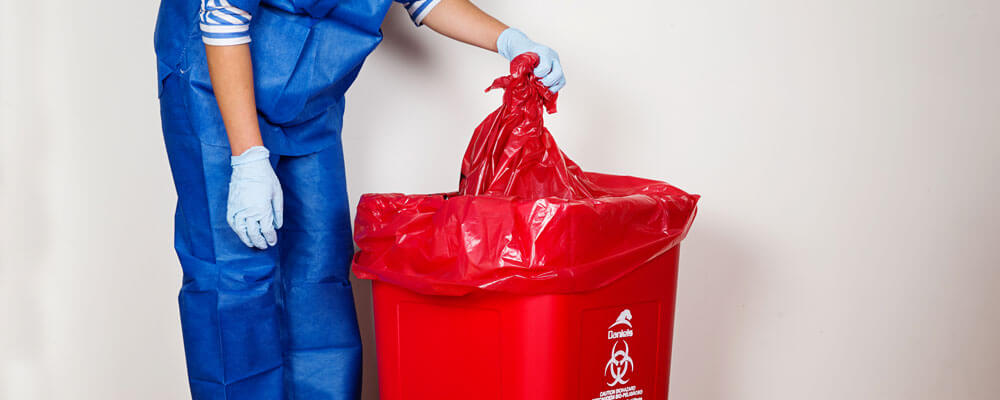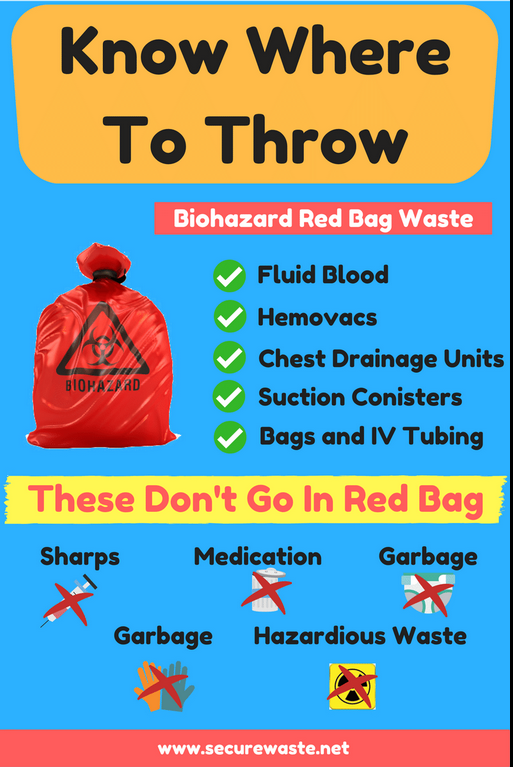Past Clean-up: Ensuring Safety And Security with Professional Medical Waste Removal
Remain Ahead of Rules: Expert Suggestions on Medical Waste Disposal
In a globe where the medical care sector is constantly developing, it is necessary for medical facilities to stay ahead of policies when it involves the correct disposal of medical waste. With rigid standards and constant governing adjustments, it can be challenging to browse the intricacies of this procedure. With professional guidance, facilities can make certain conformity and mitigate threats linked with inappropriate waste disposal. From recognizing the different classifications of medical waste to executing the best collection and segregation methods, this conversation will certainly offer workable tips and beneficial insights to assist centers remain ahead of guidelines in the ever-changing landscape of medical garbage disposal.
Comprehending Medical Waste Categories
Recognizing medical waste groups is important for correct disposal and administration in healthcare facilities. Clinical waste refers to any kind of waste created by health care activities that may pose a risk to public wellness or the setting. It is critical to categorize clinical waste properly to ensure its risk-free handling, therapy, disposal, and transportation.
There are numerous groups of medical waste that health care centers need to be acquainted with. One of the most typical groups include contagious waste, pathological waste, sharps waste, pharmaceutical waste, and chemical waste. Each classification has details standards and policies for its appropriate monitoring and disposal.
Infectious waste includes materials contaminated with blood or various other physical liquids, such as handwear covers, dress, and laboratory societies. Pathological waste refers to human tissues, body organs, or body components that call for unique handling and disposal. Sharps waste consists of made use of needles, syringes, and other sharp items that can trigger injury and transfer infections. Drug waste comprises ended, unused, or polluted medicines that need mindful handling and disposal. Chemical waste consists of solvents, disinfectants, and various other chemical substances utilized in medical care facilities.
Staying Up-To-Date With Regulatory Modifications
Staying current with regulatory adjustments is important for health care facilities to make sure conformity and correct administration of medical waste disposal. medical waste removal near me. With regulations continuously advancing, it is crucial for health care centers to remain current to stay clear of fines, penalties, and potential harm to the atmosphere and public health and wellness
To remain in advance of regulatory modifications, health care facilities should establish a system for tracking and tracking updates. This can be done by registering for regulative newsletters, attending conferences and workshops, and proactively joining market associations. Additionally, centers need to designate an employee or team responsible for remaining educated and sharing details to relevant stakeholders.
Routine communication with regulative companies is also crucial. Medical care facilities need to establish connections with local, state, and government agencies to guarantee they understand any modifications in regulations that might affect their waste monitoring practices. This can be done via regular conferences, engagement in public comment durations, and aggressive engagement with regulative agencies.
Furthermore, medical care centers should take into consideration partnering with waste monitoring firms that concentrate on medical garbage disposal (medical waste disposal services with WasteX). These firms are often skilled in the most recent policies and can give advice and assistance to make sure compliance
Carrying Out Correct Collection and Partition Approaches
To successfully handle medical waste disposal, healthcare centers need to establish proper collection and partition techniques in accordance with regulatory standards. Executing these methods makes certain the secure handling and disposal of potentially hazardous products, safeguards the environment, and decreases the danger of infections and injuries to medical care employees visit homepage and the public.
Proper collection and partition techniques entail making use of designated containers and classifying systems. Health care centers must provide plainly labeled containers for various kinds of clinical waste, such as sharps, contagious waste, pharmaceutical waste, and non-hazardous waste. These containers need to be color-coded and clearly significant to prevent confusion and promote very easy identification.
Furthermore, healthcare facilities ought to train their personnel on the correct treatments for accumulating and segregating clinical waste. This consists of informing them on the various sorts of waste, the proper containers to use, and the value of following regulations and guidelines. Routine training sessions and correspondence course must be performed to ensure that team member continue to be up-to-date on finest methods.
Furthermore, healthcare facilities ought to establish a system for routine collection and disposal of medical waste. This may entail partnering with licensed waste management companies that focus on medical waste disposal. These firms will certainly make certain that the collected waste is delivered and disposed of in compliance with regulative demands.
Selecting the Right Disposal Techniques

Incineration is one of one of the most common and efficient methods for dealing with specific sorts of clinical waste, such as pathological waste and sharps. It includes the controlled combustion of waste at heats, minimizing it to ash. However, incineration can release harmful contaminants right into the air and contribute to air pollution.

Chemical treatment entails the use of chemicals to disinfect and counteract the waste. Microwave therapy utilizes microwave energy to warm and disinfect the waste.
Making Certain Conformity With Documents and Training
After very carefully taking into consideration the ideal disposal approaches for clinical waste, healthcare More Help centers should ensure compliance with policies and minimize ecological influence by carrying out reliable documents and training treatments. This step is crucial in keeping a safe and sustainable atmosphere for both medical care workers and the public.

Training is equally essential in making certain compliance with policies. Medical care employees who handle medical waste must obtain appropriate training on waste segregation, taking care of, and disposal procedures. This training ought to cover subjects such as the proper use personal protective devices, recognition of various kinds of waste, and the correct disposal methods for every waste classification. By supplying comprehensive training, healthcare facilities can empower their staff to make educated decisions and reduce the danger of incorrect waste disposal.
Verdict
In verdict, remaining in advance of guidelines in medical garbage disposal is essential for medical care centers. medical waste removal services. Comprehending the different groups of clinical waste, staying updated with governing modifications, executing proper collection and partition techniques, choosing the ideal disposal approaches, and making sure compliance via paperwork and training are all important actions. By following these guidelines, health care organizations can properly handle and dispose of clinical waste in a risk-free and responsible fashion
From comprehending the various classifications of clinical waste to carrying out the right collection and partition methods, this conversation will supply important understandings and actionable ideas to aid facilities remain ahead of guidelines in the ever-changing landscape of medical waste disposal. - medical waste disposal services with WasteX
The most typical groups consist of infectious waste, pathological waste, sharps waste, pharmaceutical waste, and chemical waste. Health care centers must give plainly classified containers for medical waste disposal services with WasteX various kinds of clinical waste, such as sharps, infectious waste, pharmaceutical waste, and non-hazardous waste. Healthcare facilities ought to establish an extensive system to tape and track all elements of medical waste disposal, consisting of types of waste generated, quantities, and disposal methods used. Healthcare employees that take care of medical waste must get suitable training on waste segregation, dealing with, and disposal procedures.